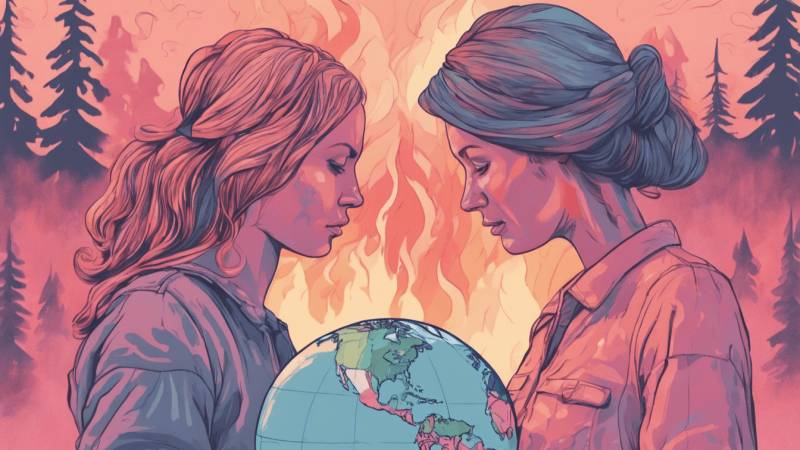
The climate crisis is one of the most urgent challenges of our time, and effective solutions require inclusive leadership. Yet, despite this, a persistent gender gap remains in global climate leadership. COP28 highlighted this disparity, where women constituted only 34% of national delegations, with just 2% of delegations achieving gender parity. These figures reflect a stagnation that continues undermining the efficacy and inclusivity of climate decision-making processes.
Women, particularly those in vulnerable regions, face disproportionate impacts from climate change — more than 80% of those displaced by climate-related events are women and girls, according to UN data. They are often the last to evacuate and are more vulnerable during natural disasters, given their limited access to information, resources, and mobility. Despite this, their presence in leadership roles remains limited. The climate agenda has yet to fully address this glaring disconnect between those most affected and those crafting the solutions.
The United Nations reports that only 10% of key leadership roles in global climate negotiations are held by women. Even within critical climate finance discussions, which totaled over $632 billion in 2020, only a fraction of this funding is directed toward gender-responsive climate initiatives. This disconnect not only diminishes the effectiveness of policies but also perpetuates structural inequalities that hinder the progress of climate action.
This underrepresentation raises a pressing question: Why are women not at the forefront of climate leadership despite being on the frontlines of its impacts? One significant reason is their limited access to educational and economic opportunities. Studies from UNESCO show that 132 million girls worldwide are out of school, with many facing systemic barriers in accessing STEM education, which is crucial for roles in climate policy and technology.
The World Economic Forum's Global Gender Gap Report 2024 points out that, at the current rate, it will take 132 years to close the global gender gap, with even slower progress in sectors like climate policy
Furthermore, a UNFCCC report highlights that less than 30% of the professionals in climate science and environmental policy fields are women, exacerbating the lack of female voices in technical discussions. The male-dominated approach to climate solutions often prioritises large-scale technological interventions over social and community-based strategies that women are more likely to champion.
COP29 has made education a central theme, with initiatives like the "Greening Teacher Training" series designed to improve climate literacy across educational systems. This effort is commendable, aiming to instill climate awareness at all educational levels, from early childhood through tertiary education. However, education alone may not be enough to shift the leadership landscape significantly. For women and young girls to move from learners to leaders in climate governance, COP29 must go beyond educational initiatives. This includes direct support and policies that foster women’s participation in decision-making roles.
The World Economic Forum's Global Gender Gap Report 2024 points out that, at the current rate, it will take 132 years to close the global gender gap, with even slower progress in sectors like climate policy. This statistic underscores the urgency for COP29 to adopt a more active role in promoting women's leadership, especially in decision-making spaces where their perspectives are essential for comprehensive climate action.
For COP29 to genuinely advance gender parity in climate leadership, it should prioritise gender parity within national delegations and negotiating teams. More inclusive policymaking—actively integrating the diverse perspectives of women and girls—will lead to more resilient and sustainable outcomes.
Furthermore, COP29 has a unique opportunity to engage young women in meaningful leadership roles. With over 600 million girls and young women constituting the largest youth population in history, it is not just an issue of equity but also efficacy, as they are already driving innovative ideas and local action in climate adaptation. Reports from UN Women suggest that when women participate in decision-making, policies are 35% more likely to focus on social and environmental sustainability, highlighting the potential impact of increased female participation in climate governance.
The gender gap in climate leadership is a fundamental weakness in our collective response to the climate crisis. The exclusion of women and young girls from key decision-making roles not only perpetuates inequality but also limits the potential for innovative, inclusive climate solutions. COP29 presents a critical juncture. To ensure a sustainable and equitable future, women and young girls must move from the periphery to the center of climate leadership. Their voices are essential, and their leadership is indispensable. Without it, the world response will remain.

